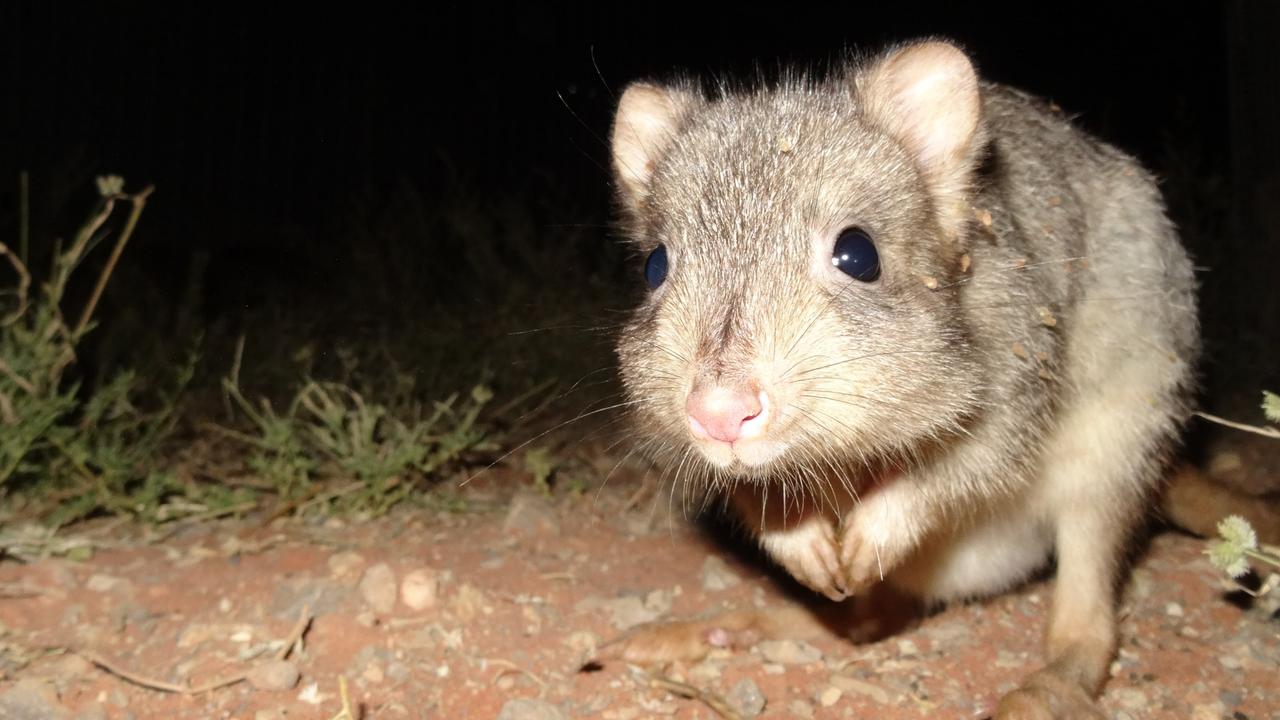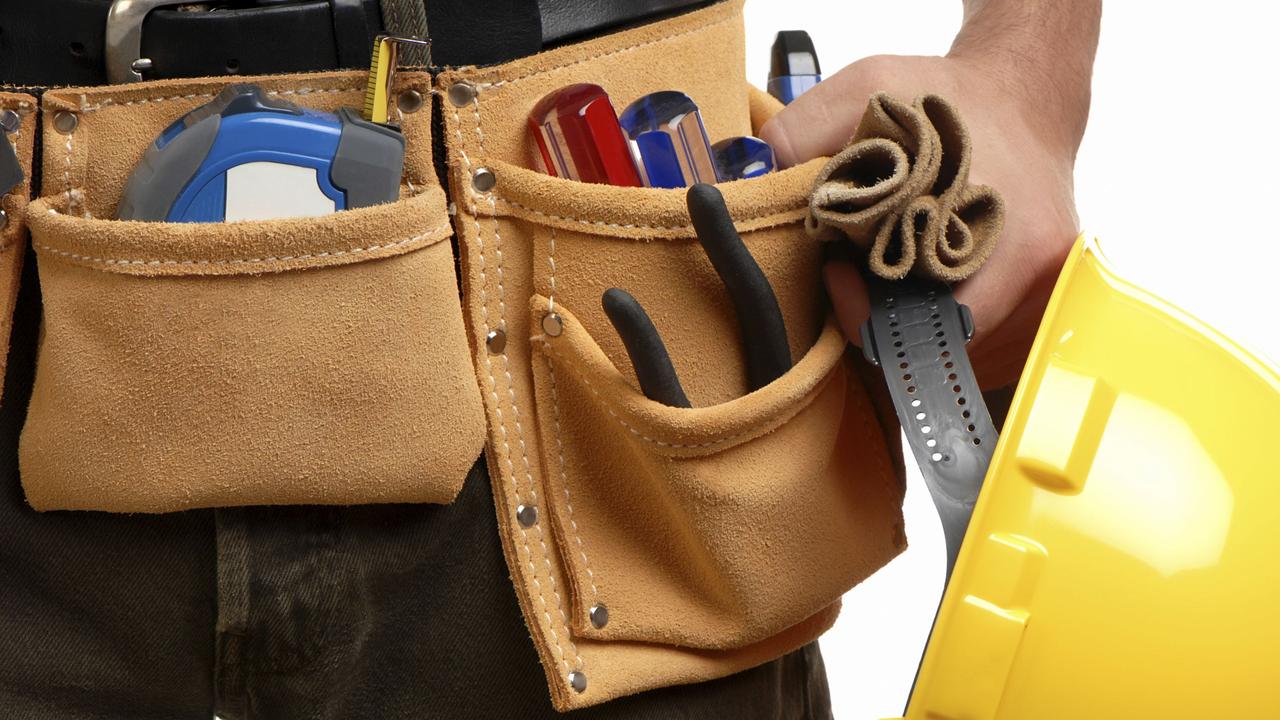Clifford Bartholomew suspected his wife was having an affair with a Vietnam War veteran — so, on Father’s Day 1971, he snapped and shot dead 10 family members
CLIFFORD Bartholomew went on a murderous rampage in a Hope Forest farmhouse on Father’s Day 1971 that claimed 10 family members and only served 8 years in jail. We look back at one of Australia’s worst mass killings.

SA News
Don't miss out on the headlines from SA News. Followed categories will be added to My News.
ALLEN Arthur can recall the moment as if it was yesterday — when he picked up the phone and was told 10 members of the same family — mostly children — had been murdered.
It was September 7, 1971, and the sun was yet to rise on a cold, wet, miserable morning the day after Father’s Day.
Tired and grumpy, the homicide detective of three years wasn’t in the mood for a joke in bad taste.
The 31-year-old married father of two dismissively told the desk sergeant: “Sure, mate, now what’s the real story?”
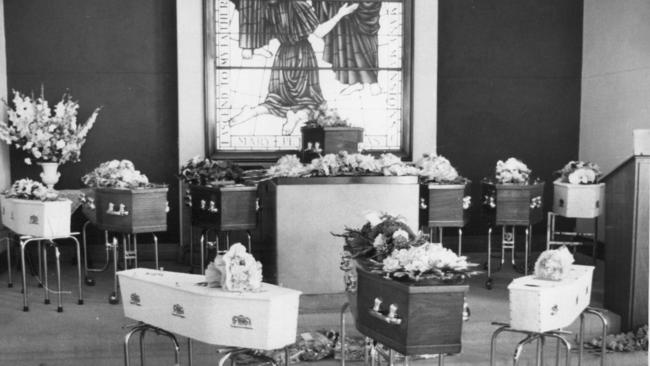
The real story was worse than he could ever have imagined. When Detective Senior Constable Arthur and his partner, Detective Sen-Constable Bill Richter, arrived at a farmhouse at Hope Forest, south of Adelaide, they were confronted with an unimaginable horror.
“There was the body of a woman lying in the open outside so we knew we were going to find nine other bodies inside,” said 75-year-old Arthur who, at the time, had been a police officer for 14 years.
“We went to enter through the back door but the odour of death was just so overwhelming. I’d smelt it before but with that many dead inside it was intense. Walking around inside that house, you couldn’t walk two steps without having to avoid a body.
“Bill’s six foot three (190.5cm) — a very confident bloke — and I’d never seen him unnerved. He just looked at me and said: ‘What the hell have we got here?’ ”
READ BELOW
My life with no mother and brother
What they had was the biggest mass murder in Australian history — committed by 40-year-old Clifford Cecil Bartholomew who, just hours earlier, had shot dead his wife and seven children.
He’d also killed his sister-in-law, Winnis Keane, her bludgeoned body was the one lying out in the front yard, and her infant son, Daniel.
Twelve bullets were used to kill them all. But that detail doesn’t begin to tell the nightmare of what had happened.
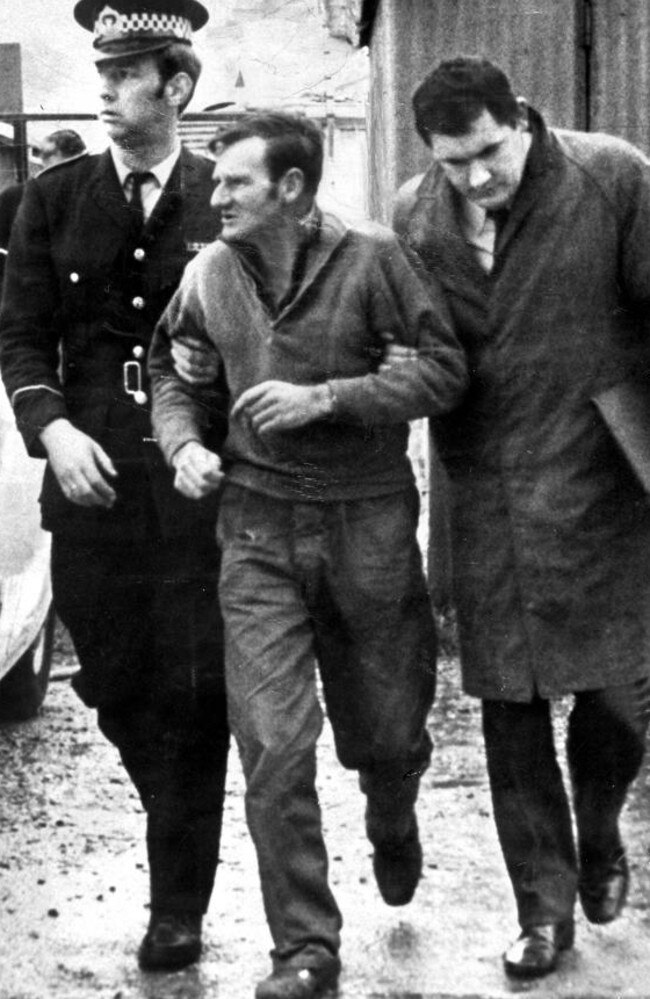
The corpse of Bartholomew’s wife, Heather, 40, lay in her bed, covered in blood. Her face was smashed in and she had a single bullet wound to the head from a .22 calibre rifle fired at point-blank range. Lying in a small camp bed next to her was the couple’s youngest child, four-year-old Sandra. She appeared at peace, with one knee slightly raised and a hand resting on her teddy bear.
There was a smudge around her mouth that might have been mistaken for chocolate — but it was dried blood.
The incomprehensible nature of Batholomew’s horrendous crimes is that less than eight hours after Sandra hugged and kissed her father and told him “I love you, Pa, when are you coming home?” he put a bullet in her brain.
We know the details of this touching exchange — and what else occurred on that fateful day — because of Bartholomew’s rambling, handwritten confession.
He claimed he killed them because his mind was in “a state of madness” from jealous rage, caused by Heather’s supposed love affair with a 22-year-old Vietnam veteran — identified only as Mr X in court transcripts — who had been befriended by the couple and was staying with them to help recuperate from his frontline trauma.
Bartholomew convinced himself it was a sexual relationship. He believed it began at Easter when the former soldier — at Bartholomew’s insistence — had accompanied Heather on a visit to see her sister, Winnis, in Sydney. When they returned, Bartholomew sensed something dramatic had changed and became obsessed that his wife and young lodger had become lovers.
In late August, with his emotions boiling over, Bartholomew confronted Heather about a “steamy” letter he had intercepted that she had written to Mr X.
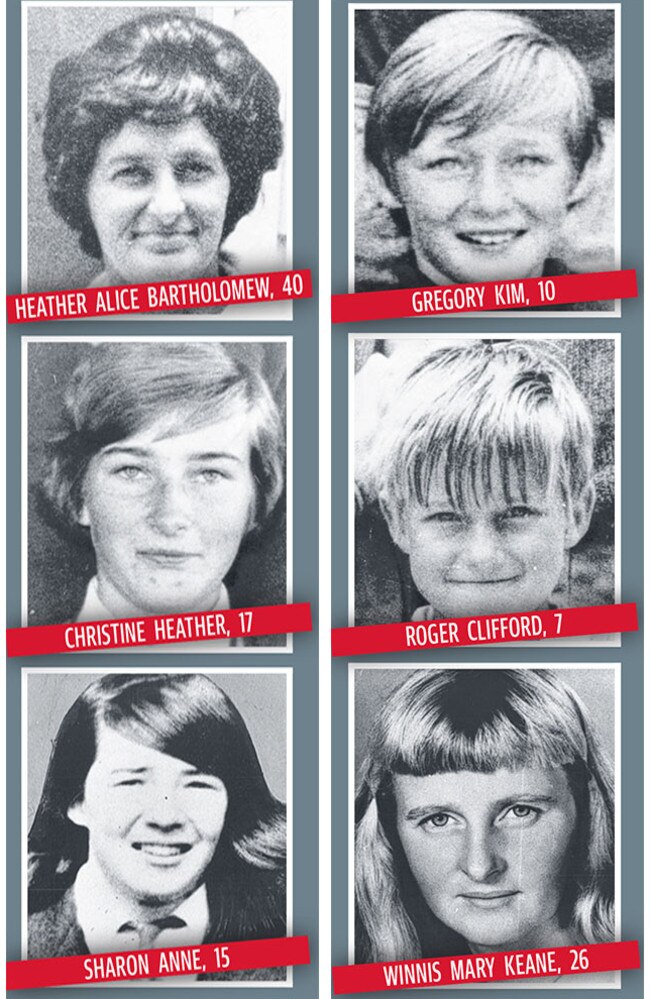
During a raging argument, she claimed the man never touched her, but her husband stormed out and moved in with his stepmother, just down the road at Meadows.
Invited back to the farmhouse to celebrate Father’s Day, he anticipated a happy reunion but only Sandra — or Sandy as she was known — showed him any affection.

That night, Heather dropped the bombshell that there would be no reconciliation and that she intended to move the family back to Rosewater, near Port Adelaide, where they had lived 10 years earlier.
Bartholomew was fully aware Mr X was living close by at Taperoo and suspected he had found them a house.
“I had to kill my wife, there was no other way out but to stop her from ever seeing (Mr X) again,” Bartholomew wrote.
“But somehow with all the screaming noises that was splitting my head wide open, and that horrible look on my wife’s face, I couldn’t control my actions and just went on (killing) until everything was finally quiet.”
Arthur doesn’t buy the defence that this was a crime of passion. “He said he was intent on killing his wife but things got out of hand and he panicked,” he says.
“That doesn’t fit with me — he went from one end of the house to the other shooting everyone in sight.
“And he did it with a single-shot rifle. He told us during the interrogation that he took an automatic rifle along too but was scared it would jam, so that tells you a lot.
“With a single-shot, you have to reload every time — empty the barrel and put in another bullet. He could have stopped at any time.
“When your 17-year-old daughter (Christine) is pleading for her life screaming ‘Daddy, don’t do it, daddy’, what are you going to do?
“This is the person you are supposed to protect from evil but he takes aim at her head and pulls the trigger?

“We don’t know anything from the victims, these were from his own words.
“I couldn’t understand why he would even want to reveal the horror of that confrontation. And, in my mind, the bastard did something even worse and that’s the murder of his baby nephew.
“A kid too young to know anything, sound asleep with a dummy in his mouth, and he coldly leans over the cot and fires. This arsehole ... forgive me, I just can’t find the right words to describe him, but I’m talking about the most evil man you could meet.”
The crime scene photos are heartbreaking — a teddy bear on a bed that had been snuggled by a child, pet dogs wandering around looking for the children who would never play with them again, a pushbike leaning against a door, a toy scooter lying in the grass ...
Then there is the image of Bartholomew — a small, slightly built, dark-haired man looking dishevelled and far older than his years — being led out by a uniformed police officer and Allen Arthur.
“We couldn’t interview him immediately because he was clearly still under the influence of alcohol,” Bill Richter recalls, after finding Bartholomew inside with a half empty flagon of sherry and an empty bottle of Bacardi.
“In fact, we didn’t interview him for around eight hours but he was pretty open about what he’d done. You can’t get emotional despite the terrible things we heard; you just be professional and do your job step by step — but this was no ordinary job.”
They heard that around 1am, Bartholomew put on rubber gloves, loaded the rifle he had bought as a birthday present for his eldest child, Neville, 19, and took a tyre mallet from his workshop.
He entered through the front door and rested the rifle against Heather’s bedroom door frame because — with three children sleeping in the same room — he intended whacking his wife with the mallet to stun her and then carry her to the shed and shoot her without waking anyone.
Shining a torch in Heather’s face, he delivered a savage blow. She screamed for Winnis, 26, who was sleeping in the lounge. Bartholomew struck her again and again before Winnis ran in. He turned and swung the mallet, smashing it into her face.
Clutching her bloodied face, she ran off, grabbing the rifle as she flung open the front door. Winnis jumped into one of the two Holden cars parked in the front yard and tried to drive off but the vehicle wouldn’t start.
In a blind rage, Bartholomew dragged her out and bashed her head repeatedly with the mallet until she was almost unconscious. He grabbed the gun from the back seat and then shot her in the head.
As he turned back to the house, 17-year-old Christine — believed to be his favourite child — stood in the passageway, terrified at what she’d seen and heard. She pleaded for her life but to no avail.
Only after Winnis and Christine were dead did he shoot Heather in front of Helen, 13, Gregory, 11, and Sandy who had woken up because of the commotion and were too scared to move.

Bartholomew yelled at Gregory to “get dressed” and, as he walked past him, put the gun behind his son’s ear and pulled the trigger. Sharon, 15, came running down the passageway screaming — and Bartholomew prompty shot her through the cheek. Wounded and bleeding profusely, she tried to hide under a bed but he pulled her out and shot her in the head.
Neville grappled briefly with his dad before being hit with the mallet. Stunned, he staggered back to his bed in the sleep-out where his father shot him dead.
As he prowled through the seven-room house — rented from a local farmer for $6 a week — Bartholomew was shocked to hear Winnis moaning in the front yard. He went outside to finally end her life.
In less than five minutes, nine people had been killed — but it wasn’t the end of the bloody rampage.
For 20 minutes, Bartholomew drank the sherry and Bacardi and Coke at the kitchen table before suddenly remembering baby Daniel, who had slept through the horror.
So he reloaded the rifle, walked calmly down the hall and into the toddler’s room before firing a single shot into his head.
Asked in a later police interview why he had killed the children too, Bartholomew said: “Once I had shot Christine, I realised I had to kill them all. I couldn’t leave any behind. I loved them all too much.”

Attending the post-mortems at the Queen Elizabeth Hospital was extremely difficult for both officers.
“Seeing a baby cut up is not the best,” Richter said with a policeman’s understatement.
“I remember the wife with the skin pulled back from the face and all the bruising to the head and the sister-in-law, too, but we couldn’t stand seeing any more of the kids being done (for the autopsy).”
During the investigation, the two detectives discovered a remarkable fact about Mr X that confirmed Heather’s assertion he had not had sex with her.
“In Vietnam, he’d been shot by an Australian machine-gunner, friendly fire, and had four bullets in his groin,” Arthur says.
“He couldn’t have sex as he had most of his bits and pieces missing and erections were out the question.
“I read her (Heather’s) letter and came to the conclusion that if you were super-jealous you might conclude there was something in but, given their age difference, I thought it was more a mother and son-type relationship.”

The officers gave their harrowing evidence at a pre-trial committal hearing at the Adelaide Magistrate’s Court in November that year and both were stealing themselves for a further gruelling time at a Supreme Court trial.
However, they were spared that agony when Bartholomew pleaded guilty to the murder of his wife. Prosecutors believed that was the most easily proven offence because he confessed to a premeditated intent to kill Heather.
It meant very few details surrounding the events of the murders were ever publicly revealed.
“Let’s face it, his lawyer was struggling to present a defence, and this was a way to try and lessen the sentence but it didn’t work,” Arthur says.
“I was there when he was sentenced to death and it was a beautiful moment. When the judge (Justice Roma Mitchell) said ‘You will be taken and hung from the neck until you die and may God have mercy on your soul’ I loved it.
“He looked as if he had been hit by a hammer and I thought ‘I hope it hurts’ — but I didn’t know what was to come.
“A story out of Yatala was that some inmates had arranged for him to ‘get a good going over’ and they (the wardens) put him in solitary for his own protection. But he couldn’t stand his own company and he begged them to let him out.”

Arthur makes no secret of his contempt for Bartholomew and that was heightened the last time they met at Yatala jail.
“I got a call from my boss that I had to drop a pair of his shoes out to him,” Arthur recalls. “I walked straight in and said, ‘I’ve got your shoes for you, Mr Bartholomew, would you sign here?
“He signed and I got up to leave when he said ‘Don’t you want to know why I did it?
“I just looked at him and said ‘I know all I need to know; you’re not getting any satisfaction from me’ and I walked out. I wasn’t going to let him relive it.”
Seven years later, Arthur got a call from a fellow officer telling him Bartholomew was being freed.
“I needed to sit down, I was in total shock,” he says. “I said out loud ‘Which f---ing idiot came to that conclusion.’
“It was a disgrace — I guess all the psychologists said he would never offend again, and he might not have, but I think about all the other lives he took.”
Richter, who was transferred to Port Lincoln in 1973 and resigned from the police in 1977, said he had been equally stunned.
“I never thought they’d hang him but it was good to have that over his head,” the 75-year-old says.
“Getting life in those days was at least 20 years in jail but to get out in eight was just shocking.
“We were told if he got out in quick time they could prosecute him again for the others (murders) but they never did. They could still prosecute him today but they won’t.”
Richter, who, after his police days, ran a motel, owned a commercial laundry and began a security business in Port Lincoln, kept only one set of files from the dozens he compiled while in the force — the Hope Forest murders.

“I don’t really know why I keep them — out of respect for all the victims, maybe,” he says.
“I just don’t feel I could burn or destroy them and I couldn’t throw them in the dump for someone else to find.
“Even talking about it now I feel some effect from it. We didn’t have anyone we could talk to (counsellors) back then; we just had to wear it.”
Arthur also has his case files. In a highly decorated 34-year police career, the Middleton resident dealt with some of the state’s most infamous cases. They include the Rhianna Barreau abduction, the Van Beelen murder case, the Football Park car bombing, the 1969 kidnapping of 19-year-old Monica Schiller, and the 1972 Wallace murder, which resulted in the arrest of John Neil Hayes, the son of the then lord mayor.
But he says nothing compares to the Hope Forest massacre.
“It took my breath away at the first interview when I asked him what he did for a living and he answered ‘Slaughterman’,” Arthur says.
“How fitting for a man who just executed 10 people.
“I’ve known some murderers but this bloke’s in a category all of his own.

“Those children he slaughtered would have been in their fifties and sixties now with children and grandchildren of their own.
“He stole all of that and for what? Just to satisfy his own bloody ego”.
More than 250 mourners — including the investigating police officers — packed the Centennial Park Cemetery chapel for the funeral of the victims of the Hope Forest massacre.
In front of mostly small coffins, men and women sobbed openly throughout the service.
The funerals were paid for from a public appeal fund, named “Operation Respect”.
My life with no mother and brother
By Craig Cook
NOELEEN Paltridge was staying at the Campbelltown home of her aunt and uncle, Daphne and Douglas, when the police came knocking.
When the officers were let in, she realised something was wrong but was ushered into another room.
As she struggled to hear what was being said outside, the eight-year-old turned on the TV and discovered her mum, Winnis, little brother Danny, Aunty Heather and seven cousins were all dead.
“I wanted to watch a show with the Leyland brothers and that’s when I saw the Channel 9 news about what had happened,” Noeleen recalled.

“The next day I started asking ‘When can I go and see my mum’ but they just avoided giving an answer.
“There was a newspaper on the table turned upside down so I turned it over and said, ‘That looks like Aunty Heather’s house. When can we go and see her?’
“But they wouldn’t talk about it and I was never allowed to talk about it.”
Noeleen’s real surname was Betterman — her mother’s maiden name after she gave birth out of wedlock. Winnis later married Bill Keane, a soldier, but they had just separated.
Because of her mother’s erratic lifestyle, Noeleen was cared for by Daphne and Douglas Paltridge whom she called “mum” and “dad”.
Noeleen only avoided being an 11th victim at the farmhouse because her stepbrother had a sense “something wasn’t right”.
Terry Paltridge, then 23, drove Noeleen to the Father’s Day family gathering at Hope Forest.
He was supposed to leave her with her mother but Terry was unsettled by the tensions between the adults and made the decision that they both return to Adelaide.
“Nobody stopped him and, as it turned out, he saved my life,” Noeleen says.
By any measure, it’s been a tough life for the 52-year-old. A mother-of-four who suffers from a heart condition and emphysema, and was recently diagnosed with post-traumatic stress disorder, Noeleen said that well before her mother’s death, she had already been handed around between several sets of relatives.
At the Paltridge’s house, she recalls often being left by herself — her three step-brothers and two step-sisters were at least a decade older.
“My (adopted) parents were good people who did their best but they had some strange ways,” the grandmother of two says. “They didn’t like to send me to school much but I didn’t mind.”
When welfare services indicated they were about to intervene, Noeleen was taken to Queensland where she was left for a while with her natural father, an abusive alcoholic.
In her teenage years, she was a runaway and spent time in a NSW remand centre for girls. Noeleen says that the day after her 16th birthday, she broke out and headed back to SA.
A few months after she returned to Adelaide, Noeleen was told the news that Clifford Bartholomew was walking free after serving just eight years.
“I’ve never been scared of Bartholomew. He harassed other family members after he got out of jail but he didn’t have the guts to face up to me,” she said.
Noeleen said she often thinks of her mother and brother. “I wonder what might have been if that bastard hadn’t stolen their lives,” she says. “And I worry he’s still walking around — is that fair?”

